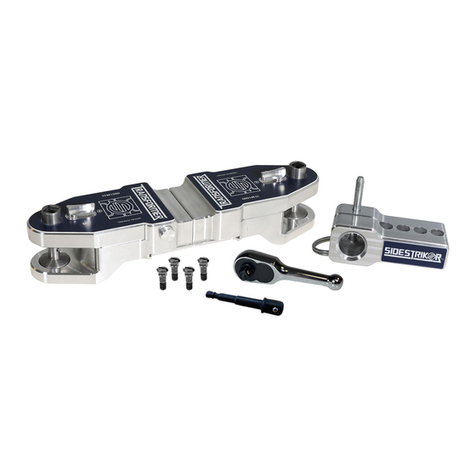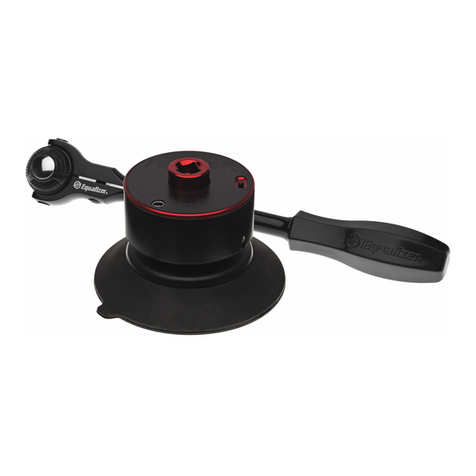
5
A product of
Item # Part Number Part Descripon Qty.
1 90-02-4140 Adjustable Shank 1
2 90-04-9224 Hitch Pin Clip 1
3 90-03-9220 Hitch Pin 1
4 90-03-9475 3/8” Nut 4
5 90-03-9490 3/8” Lock Washer 4
6 90-02-5240 Inside Link Plate 2
7 90-03-9480 7/16” x 1-1/4” Bolt 4
8 90-02-5340 Outside Link Plate 2
9 90-03-9470 3/8” x 3-1/4” Bolt 4
10 90-02-5140 L-Bracket 2
11 90-03-9486 7/16” Nylock Nut 4
12 90-03-9460 L-Pin 2
13 90-04-9208 L-Pin Clip 2
14 90-03-6200 Snap-up Handle 1
15 90-04-9240 1/4” Snap-up Bolt 1
16 90-03-6140 Snap-up Hook 1
17 90-04-9244 1/4” Snap-up Nut 1
Item # Part Number Part Descripon Qty.
18 90-03-9425 5/8” Nut 2
19 90-03-9420 5/8” Lock Washer 2
20 90-03-9415 5/8” Washer 4
21 90-03-9105 Spacer Rivet 1
22 90-04-9110 Spacer Washer 6
23 90-03-9212 Socket Pin 2
24 90-04-9216 Socket Pin Clip 2
25 90-03-9700 Angle Set Bolt 1
26 90-02-0400 400 / 4,000 lb. head 1
27 90-03-9410 5/8” x 4-1/2” Bolt 2
28 BD043 Arm Warning Stickers
4,000 lb. arm sticker 2
29 BD035 Socket Warning Sticker 2
30* 90-02-0499 4,000 lb. Spring Arm 2
* Each package contains two (2) spring arms. These arms are spe-
cicallysizedforyourhitchhead.Springarmswillnotfunction
with a hitch head of a different rating.
www.equalizerhitch.com
4-POINT
SWAY CONTROL
™
ATTENTION
IT IS THE OPERATORS RESPONSIBILITY TO READ AND
TAND PRODUCT INSTRUCTIONS AND PROPER USE.
IT IS
THE DRIVER’S RESPONSIBILIT
Y TO MAKE THE NECESSARY
TO THEIR DRIVING HABITS, TRAILER, TOW VEHICLE,
AND T
T TO AVOID TRAILER SWAY. TRAILER
SWAY HAS MANY
CAUSES, INCLUDING: IMPROPER
TRAILER LOADING,
TECHNIQUES, SPEED, PASSING VEHICLES,
WEA
THER CONDITIONS, ROAD CONDITIONS,
AND OTHERS. THERE
TATIVE MEASUREMENT OF TRAILER SWAY OR
SWAY
T EXERCISE CAUTION AT ALL TIMES
WHILE TOWING A TRAILER AND ABIDE BY ALL TRAFFIC LAWS.
Model# 90-00-XXXX
Max. Tongue Weight ___ Lbs.
Max. Trailer Weight _____ Lbs.
V5 & SAE Tested
Equal-i-zer®is a product of Progress Mfg. Inc.
For a copy of the hitch instructions call
Progress Mfg. Inc. at 1-800-478-5578 or visit:
MADE IN THE USA
EQAS0308
Item# 28 - Spring Arm Warning Sticker


























